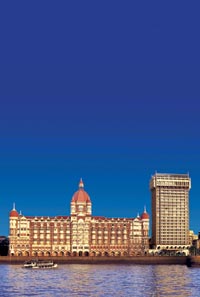The spirit of India

TAKE it from someone who was born, bred and buttered in Mumbai: it’s a city on many different levels.
Depending on the kind of person you are, then, there’s a level at which you can approach this teeming mass of 15 million souls. It isn’t just the gateway to India, it is India herself, living, breathing, interfacing on sardine-packed trains and in tony, haute-monde nightclubs.
This is cinema city, this is the capital of commerce, it’s dream destination. Got an idea? You’ll meet someone here who’ll fund it, action it and market it for you. Wanna be a star? There’s a whole slew of people who can get you close to the movies. Looking to explore your hedonistic streak? Any of the city’s nightspots will open up your mind.
And therein lies the city’s strongest gift: it lets you be yourself, whether you’re in transit en route to the rest of the country, or whether you’re soaking through into the mille-feuille of the city.
Six ways, then, that you can approach this often intimidating but never unfriendly monolith:
I love Bollywood: If you’re one of those that has learnt to love the gyrations of hips and storyline alike in Hindi movies, Mumbai is the place to be, as capital of India’s film industry, turning out 800 films a year.
Places to visit include where the films are made (Film City in Goregaon, the Filmistan and Kamalistan studios in North Bombay), and the suburbs where the stars live – Bandra, Juhu and Andheri, any streetwalker will point you to the legendary Amitabh Bachchan’s bungalow, or to shirtless hero Salman Khan’s house. Some enterprising types can also arrange for you to be an extra on a film set, while a visit to film designers like Anna Singh and Manish Malhotra ensures you come away with garments made by those who design for the stars.
Eating, shopping, rocking: True to form, you can eat, shop or club posh or street, whichever you choose. Incredible bargains are available at export surplus outlets on Fashion Street and Bandra’s Linking Road (often with the labels intact), while foodstalls like Bademiyan (behind the Taj), Bachelor’s (on Marine Drive) and Kailash Parbat in Bandra ensure that you’ll have worked hard to acquaint yourself with the curious Bombay Belly.
Or you can go top of the line – designers such as Ritu Kumar, who dresses Jemima Khan, Ritu Beri (formerly of Scherrer) and more retail through upscale boutiques such as Ensemble, Mélange, Kimaya, Turqouise and the Courtyard, while superlative artistry for the palate is available at Ling’s Pavilion (Chinese), Gazalee (local-style seafood), Frangipani (Italian) and the Zodiac Grill (Continental).
And on the club front, low-end dance bars (Jharna, Topaz) compete with hoity-toity spots: Athena, Karma, Liquid Lounge, Enigma, as well as the travelling GB party nights.
The Culture Bug: Art, history, Raj leftovers, Bombay is home to it all. The Jehangir Art Gallery and the National Gallery for Modern Art display both established and upcoming Indian and international artists, while a host of smaller galleries (Pundole, Chemould, Cymroza) around the city put out some truly inspired work. If you’re the theatre type, although November with it’s annual Prithvi festival is the best month, there’s productions in several languages every weekend to choose from, and in several styles, too: folk, dance-drama, experimental, farce. As for monuments and Raj memorabilia, a walking tour will take you past ancient mile markers and monuments from the past: Flora Fountain, the Gothic St Xavier’s College and Victoria Terminus (named after the Queen), the Indo-Saracenic Prince of Wales Museum and the Gateway of India, opposite which, is a monument in itself, the century-old Taj Mahal Hotel. The Bassein Fort dates to the Portuguese occupation, while the seventh-century Elephanta cave temples are only a boatride away. Look around, too, for the Art Deco theatres – Regal, Metro and Eros, and take a trip to Powai to look at the neo-classical architecture that could have been transplanted from Florence. And if it’s nature that’s your thing, head for the Borivali National Park and the Mahim Nature Park.
Third world exotica: For a peek into how much commerce rules the city, take a ride on one of the local trains – if you can get in. Look for the dabbawallas, who carry lunch from hundreds of thousands of housewives to their husbands around mid-morning, while in the ladies’ compartment, fisherwomen and professionals share space, children peddling the same wares to both.
Take in the stock exchange on Dalal Street and ask a friend to take you to Asia’s biggest slum, Dharavi, where some of the world’s finest leather goods are turned out. A trip to Chor Bazaar should send you back with enough imitation antiques (and often a real steal) to furnish your new apartment – and keep you coming back.
